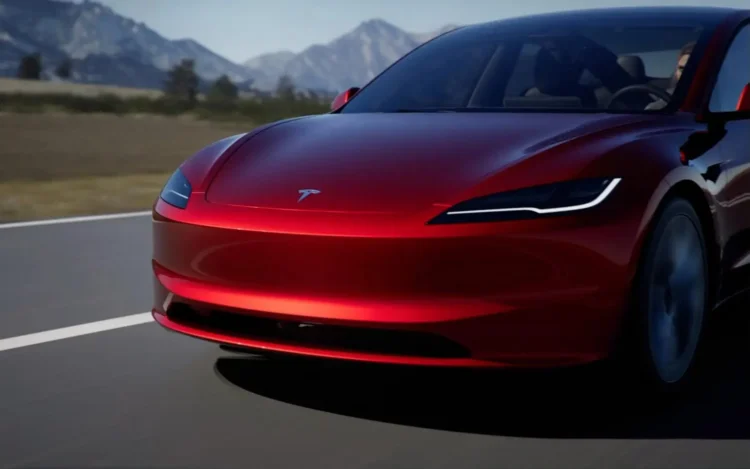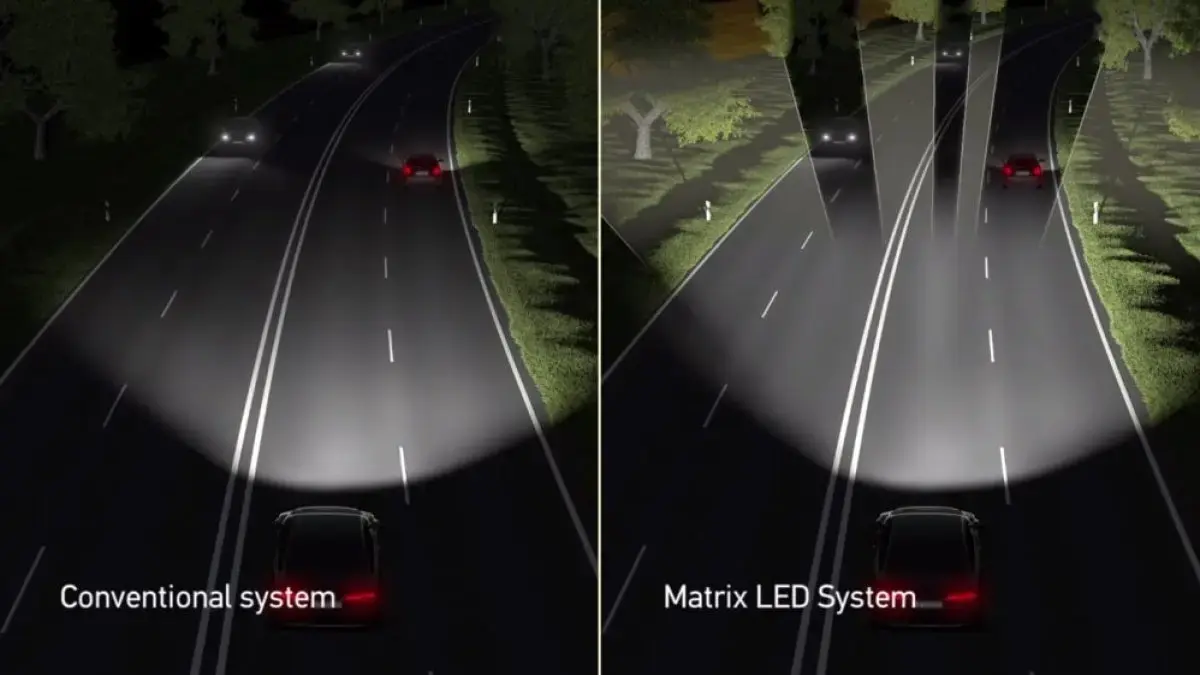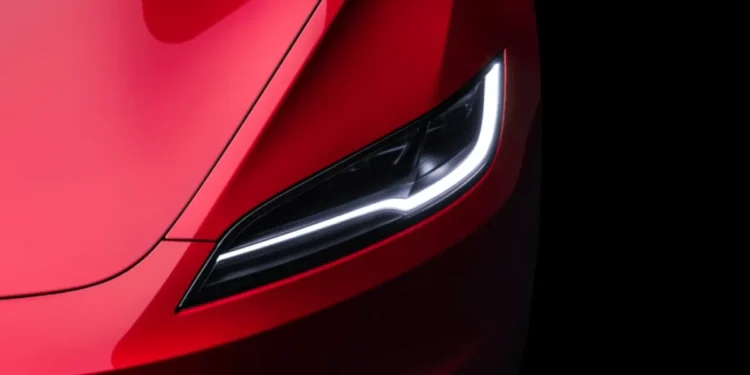Table of Contents
Tesla Is Ready To Enable Adaptive Headlights in the New Model 3.

Tesla appears to finally be ready to roll out support for adaptive headlights in Europe according to a new document. However, it looks like support may be limited to the upgraded Model 3, at least initially.
1. Support of matrix headlights?
This European certification document dated November 8, 2023 shows that the new Model 3 will soon add “Adaptive Main Beam” headlights, which is expected to be implemented through an OTA update. The news, originally shared by @eivissacopter on X, suggests that older models like the original Model 3 and current Model Y may not get this update, even though some of them have matrix headlights.
 If you didn’t know, standard or conventional headlights remain in a fixed position and only light up the road right in front of the car. So, when you’re turning a corner, the side of the road gets lit up, not the road you’re turning onto. Now, with adaptive or “cornering headlights”, as some people call them, the lights turn based on how you’re steering. This way, they light up the actual path your vehicle is taking.
If you didn’t know, standard or conventional headlights remain in a fixed position and only light up the road right in front of the car. So, when you’re turning a corner, the side of the road gets lit up, not the road you’re turning onto. Now, with adaptive or “cornering headlights”, as some people call them, the lights turn based on how you’re steering. This way, they light up the actual path your vehicle is taking.
Update : It’s not entirely clear whether the new Model 3 will have full matrix headlights like other models, or just adaptive beams.
There’s also no mention of Tesla’s Model S and Model X getting support, even though they also now have matrix headlights.

The fact that this decision initially limits this feature to the upgraded Model 3 is interesting. We have no reason not to believe that this feature won’t eventually be added to other Tesla models that include matrix headlights, but the document explicitly highlights the new Model 3 and its adaptive headlights. It’s worth noting that Tesla likes to test new software on a small group of owners early on, but the new Model 3 does come with new headlights. Therefore, it’s unclear whether this is a software strategy or a change in the new Model 3’s headlights that finally enabled Tesla to enable adaptive headlights in Europe.
2. Back to matrix headlights, what are they?

Matrix headlights, also known as adaptive headlights, represent a cutting-edge technology in automotive lighting, specifically engineered to enhance safety and visibility during nighttime driving. These headlights consist of independent controllable LEDs or a single light source, allowing for dynamic adjustments in light distribution.
The core function and advantage of matrix headlights is the ability to selectively dim or turn off a specific LED element, creating “shadows” or dark areas in the beam pattern. For example, when an oncoming vehicle is detected, the system adjusts the lighting pattern to prevent high beams from shining directly into other drivers’ eyes. However, other parts of the road will remain well lit, ensuring clear vision for the driver.
This adaptability proves its importance as the system adapts based on the situation; whether you’re navigating through traffic, winding around curves, or sharing the road with other vehicles. So, when it comes to lighting, matrix headlights are the real solution for a safer and more dynamic driving experience.
3. Different global standards
As Tesla speeds up to take its adaptive headlights on a world tour, it’s like preparing for a global dance with different automotive regulations. Each country comes with its unique set of standards for automotive lighting, turning the rollout into a global compliance challenge for Tesla. To make this happen smoothly, Tesla needs to stay on top of these standards as the company pushes the feature’s availability across borders. Particularly, securing certification in Europe holds a key position in the plan, as the continent is known for its stricter vehicle standards. If Tesla can conquer the European regulatory landscape, it might just pave the way for a smoother introduction of the feature in other markets around the globe
4. Tesla customers reaction!
The response to the upgrade seems to differ; For current Tesla owners, the upgrade is something they might desire, suggesting a positive anticipation for the new features. On the other hand, new Model 3 buyers are expected to welcome the additional technological enhancements. The way these upgrades are rolled out could significantly influence the overall perception of the company among consumers which can impact customer loyalty and brand recognition, factors that Tesla must handle carefully.
















